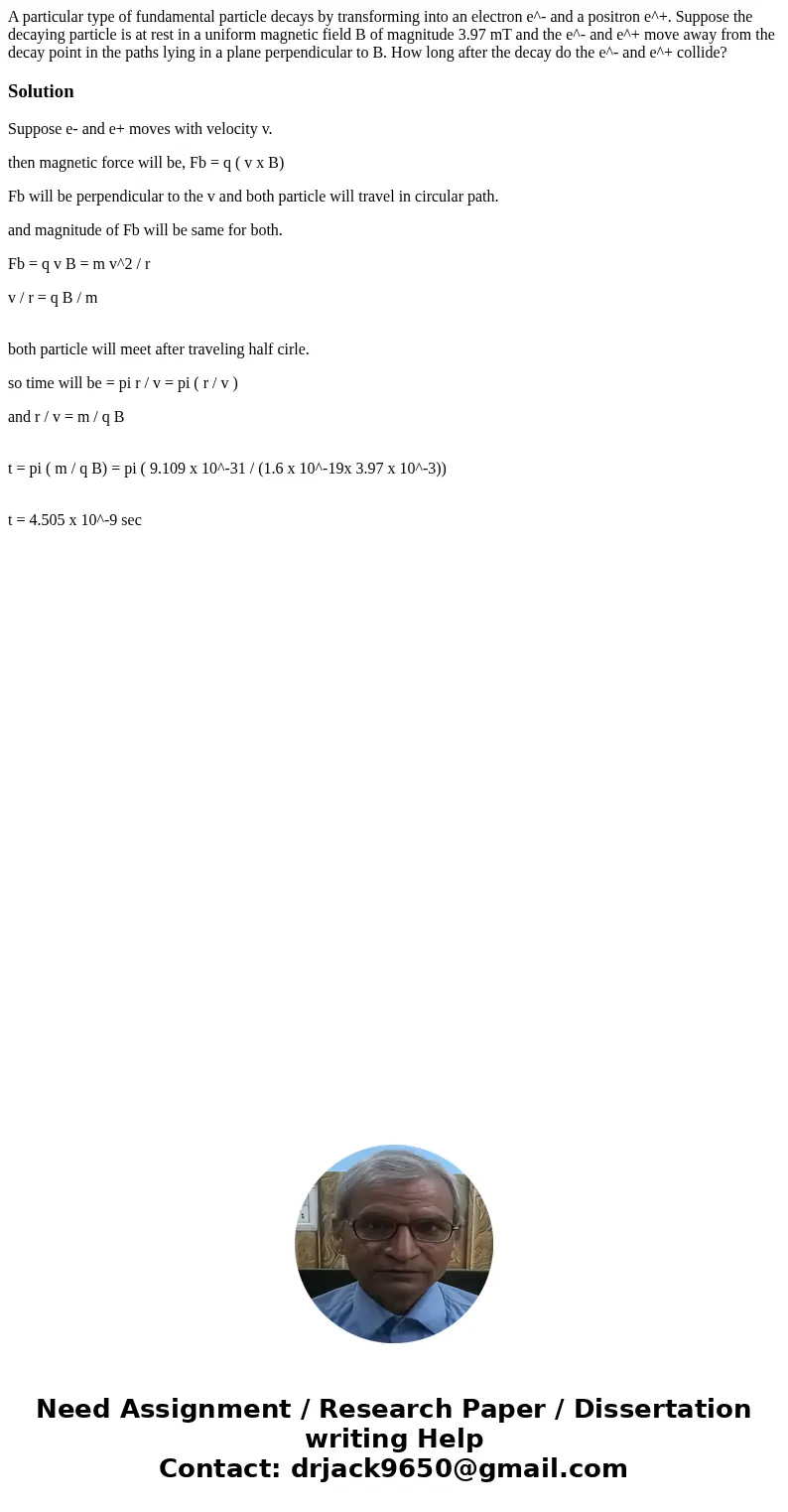A particular type of fundamental particle decays by transfor
A particular type of fundamental particle decays by transforming into an electron e^- and a positron e^+. Suppose the decaying particle is at rest in a uniform magnetic field B of magnitude 3.97 mT and the e^- and e^+ move away from the decay point in the paths lying in a plane perpendicular to B. How long after the decay do the e^- and e^+ collide?
Solution
Suppose e- and e+ moves with velocity v.
then magnetic force will be, Fb = q ( v x B)
Fb will be perpendicular to the v and both particle will travel in circular path.
and magnitude of Fb will be same for both.
Fb = q v B = m v^2 / r
v / r = q B / m
both particle will meet after traveling half cirle.
so time will be = pi r / v = pi ( r / v )
and r / v = m / q B
t = pi ( m / q B) = pi ( 9.109 x 10^-31 / (1.6 x 10^-19x 3.97 x 10^-3))
t = 4.505 x 10^-9 sec

 Homework Sourse
Homework Sourse